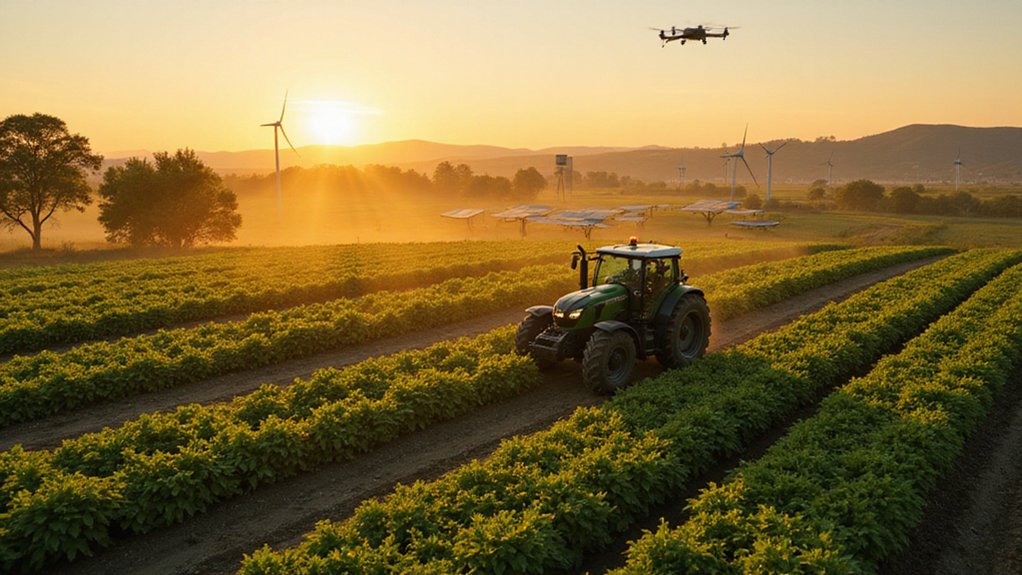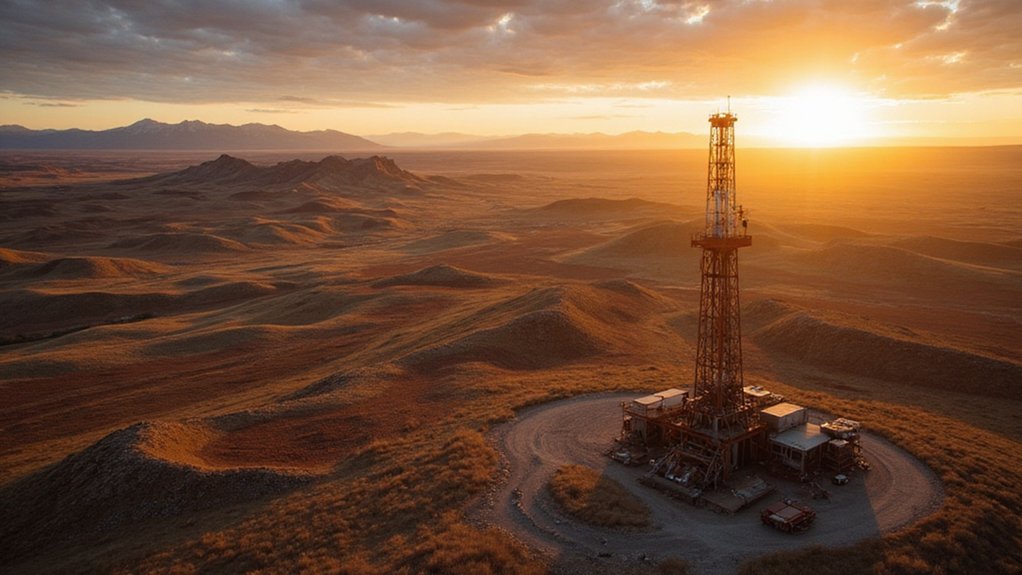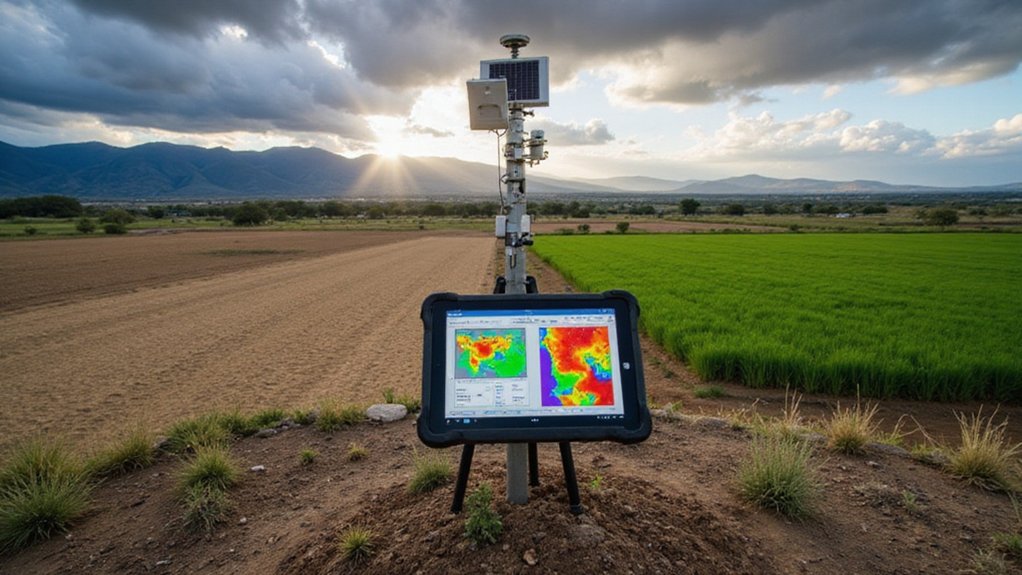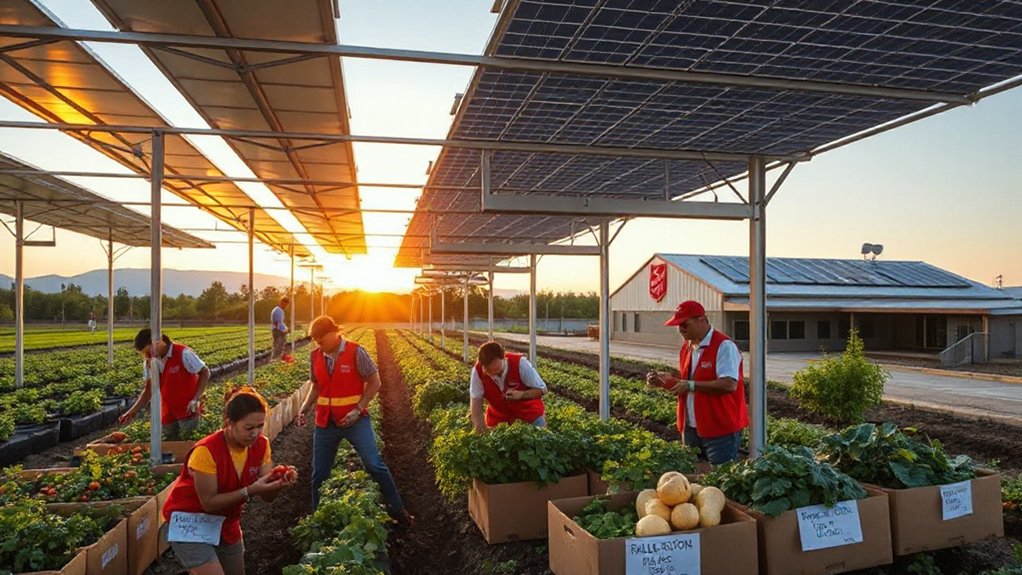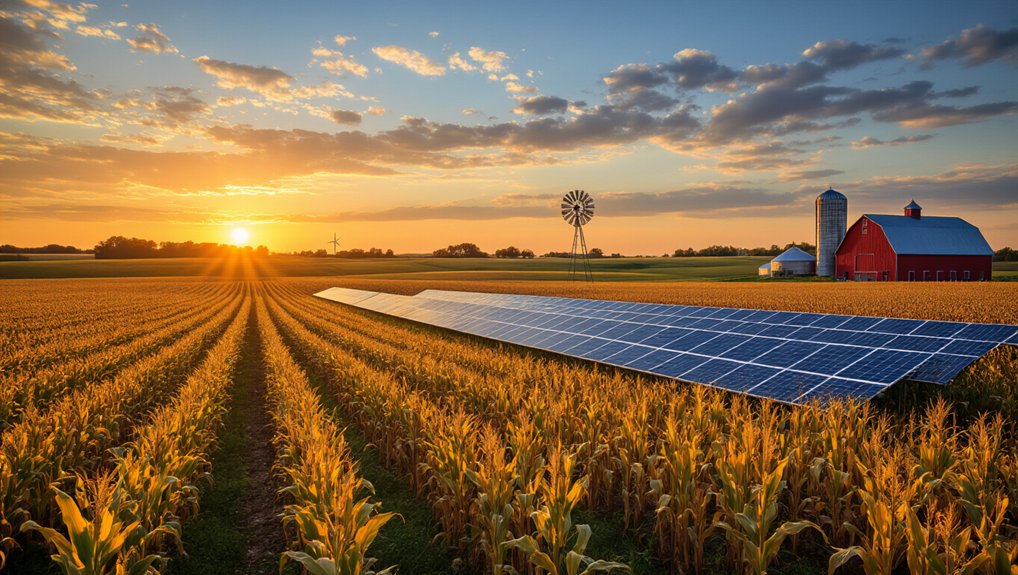As agriculture faces growing challenges from climate change and resource scarcity, artificial intelligence and clean energy technologies are emerging as powerful allies for farmers worldwide. The global AI in agriculture market, valued at USD 4.7 billion in 2024, is growing rapidly with projections showing it will reach $2.6 billion by 2025. This growth represents a critical change for one of the world’s least digitized major industries.
Farmers are now using AI-powered crop monitoring systems that utilize satellite imagery and soil sensors. These technologies help detect pests early and predict ideal harvest times. Precision farming techniques are enhancing resources, with smart systems determining exactly how much water and fertilizer each plant needs. Early detection systems have reduced pesticide usage by up to 20% while maintaining crop health and yield outcomes.
AI-powered agriculture transforms traditional techniques through precision, turning fields into data-driven ecosystems where every plant gets exactly what it needs.
Labor shortages in farming regions are being addressed through automation. Autonomous tractors, harvest robots, and smart drones are taking over tasks once done by hand. These machines can work longer hours than humans and perform repetitive tasks with greater precision. As labor costs rise, this AI-based automation is becoming essential rather than optional.
Data analytics is transforming century-old agricultural practices. AI systems analyze vast amounts of information to provide real-time advice to farmers. Predictive weather analytics improve planning, while information management systems boost overall farm productivity. The market is expected to grow at a CAGR of 26.3% from 2025 to 2034, reflecting the increasing importance of data-driven decision making in agriculture. Every farming decision is increasingly guided by data rather than tradition.
Resource management has become more precise thanks to AI. As farmland decreases and food demand grows, AI helps maximize yields while using fewer resources. Smart algorithms dictate ideal planting cycles, making agriculture more sustainable and efficient.
The combination of AI and clean energy is altering how food is grown, harvested, and distributed. Computer vision technologies and machine learning applications in agriculture are rising exponentially. Weather forecast systems utilizing AI-driven predictions now account for 20% of agricultural AI applications, giving farmers crucial insights for planting and harvesting decisions.
This technological transformation isn’t just enhancing farming—it’s becoming essential for its survival. As agriculture evolves into a high-tech industry, AI and data aren’t just helping farmers—they’re ensuring the future of food production in a changing world.
References
- https://scoop.market.us/ai-in-agriculture-statistics/
- https://www.gminsights.com/industry-analysis/ai-in-agriculture-market
- https://www.oldnational.com/resources/insights/disrupting-agriculture-how-ai-and-data-are-powering-the-2025-agtech-revolution/
- https://www.precisionfarmingdealer.com/articles/6440-how-ai-is-transforming-modern-agriculture-in-2025
- https://thrakika.gr/post/ai-in-agriculture-expected-to-grow-exponentially-by-2025-report-states-V7
